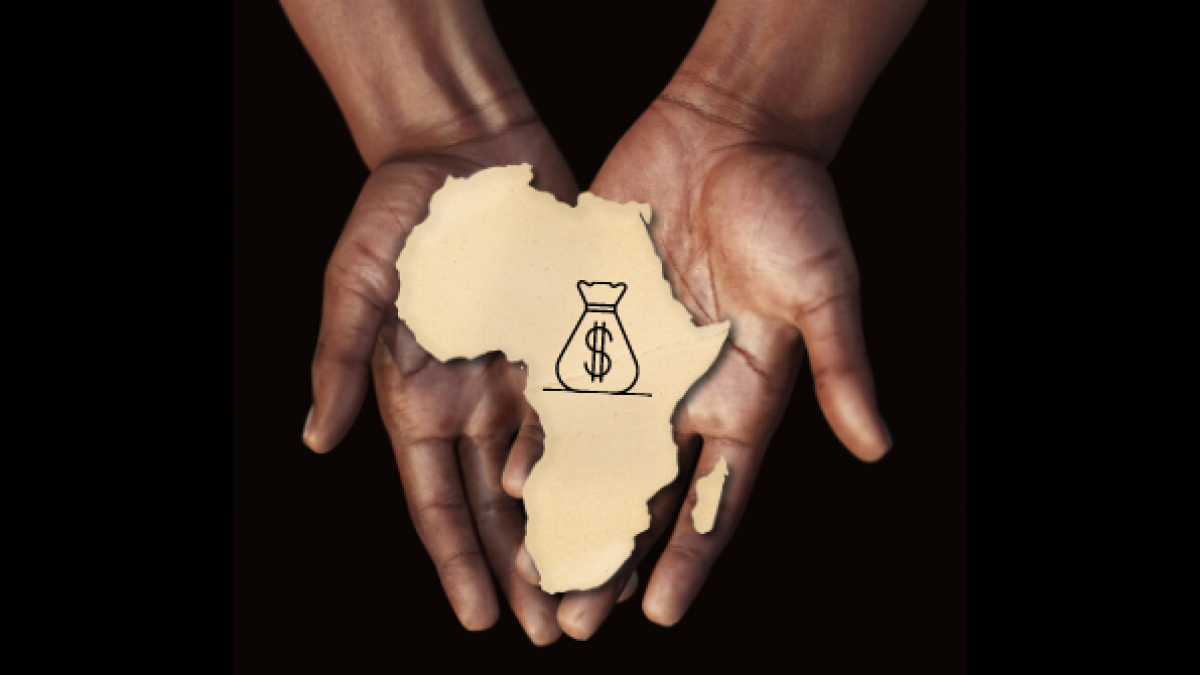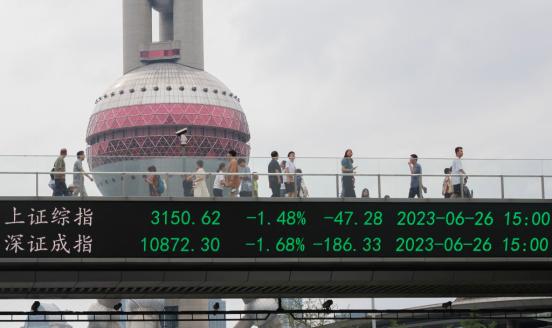Debt relief for Sub-Saharan Africa: what now?
When G20 finance heads meet on 18 July, Europe will again need to lead on the group’s flagship COVID-19 initiative to postpone low-income countries’ d

On 15 April, senior G20 finance officials announced an agreement to provide debt-service postponement on sovereign obligations for the poorest members of the International Monetary Fund and World Bank[1]. This was a promising sign of global financial cooperation despite considerable political tension within the G20. European G20 members played an important role in pushing for the agreement, primarily to help countries in sub-Saharan Africa, a region of considerable political and economic interest to Europe.
The COVID-19 Debt Service Suspension Initiative (DSSI) postpones interest and principal repayments coming due on debt owed to bilateral official lenders from 1 May to 31 December 2020, with the possibility of further extensions. The initiative was seen as a quick way to free up fiscal and foreign exchange resources for vulnerable countries, in parallel with IMF support. In return, the beneficiaries committed to deploy these resources to deal with the COVID-19 pandemic. In addition, countries were asked to disclose all public sector financial commitments (debt) under standard international definitions and to contract no new non-concessional debt during the suspension period, if not approved by the World Bank or IMF.
As this agreement came from the G20 (as compared to, say, the G7), debt thus relieved goes beyond that held by members of the Paris Club. The most important of the newer official creditors is China, which has agreed in principle to act on equivalent terms to other official creditors. This is the first time China has agreed to join Paris Club members in such an initiative.
The COVID-19 Debt Service Suspension Initiative (DSSI)
At the time the programme was announced, payment relief for eligible countries (38 out of 73 are from sub-Saharan Africa) was anticipated to be “north of $20 billion”. This assumed that voluntary private sector involvement of up to $8 billion owed to financial institutions in advanced countries would accompany the actions of bilateral official creditors. However, as discussed below, such blanket private sector involvement has so far not materialised.
Current World Bank estimates point towards a maximum of $11.5 billion of payment relief to be provided by official bilateral creditors, within and outside the Paris Club. Of this amount approximately $6.6 billion would benefit countries in sub-Saharan Africa. Of 73 eligible countries, 40 have signaled they will participate in the DSSI, 28 of which are located in sub-Saharan Africa. The total potential relief would amount to $8.8 billion, of which $5.3 billion, or 60% of the total would become available to sub-Saharan Africa.
At the time of writing, 18 countries have signed an MoU with the Paris Club, 12 of which are located in sub-Saharan Africa. Fourteen more countries have officially requested relief from the Paris Club, indicating that just under half of eligible countries have shown an interest in the programme.
Even if all eligible sub-Saharan Africa countries were to apply, only a minority of the debt service payments would be postponed, as bilateral loans represent 44% of payments due in the current DSSI reference period (Figure 1).
Source: Bruegel based on World Bank International Debt Statistics.
Note: Angola alone represents 23% of all bilateral debt service payments due, 63% of all non-official payments due and 3% of all multilateral payments due.
The issue of China’s quasi-official foreign debt
During the 2008 global financial crisis, China’s role as a creditor was much more limited, so China’s main contribution to solving the global financial crisis was to stimulate its economy through a massive investment-led stimulus. This saved the day for commodity exporters, among others, including many countries in sub-Saharan Africa.
Today though, beyond boosting demand for commodities through its recovery, China is also among the largest creditors in the emerging world and in particular in sub-Saharan Africa (Figures 2 and 3). Since 2011 China has become the largest creditor of sub-Saharan Africa countries and by 2017, the stock of debt owed by sub-Saharan Africa countries to China amounted to roughly three times that of countries who participate in the Paris Club (Figure 2). Furthermore, China accounts for 75% of debt service payments due during the DSSI period, more than a third of which are due from Angola.
Source: Bruegel based on Horn, Reinhart and Trebesch (2019) and Paris Club Website.
Source: Bruegel based on World Bank International Debt Statistics.
In the Paris Club China, has ‘observer’ status.
Participation by the fullest range of Chinese creditors in the DSSI, notably the Chinese policy banks, is therefore an important factor in terms of the amount of debt that will be relieved. However, this will depend on which Chinese entities are considered official creditors for the purposes of the DSSI.
Such information is not easily available from either Chinese or borrower sources. China’s state-driven economic model makes it harder to distinguish between official and private sector creditors in its overseas transactions. Semi-official Chinese press reports have so far clarified that ‘preferential loans’, a large part of China’s lending to emerging economies, are to be considered private, and therefore excluded from the relief under the DSSI, even if the amounts are included in World Bank debt service data. While obligations to the China Exim Bank (one of the two large Chinese policy banks) are now included in the DSSI, obligations of the China Development Bank and other state-owned enterprises, which are much larger as World Bank President Malpass has pointed out. Such exclusion reduces the potential benefits of DSSI for sub-Saharan Africa, even though these creditors are included in the World Bank estimates.
To get a rough idea of creditor identity, we used data on Chinese loan commitments to African countries gathered by the China-Africa Research Initiative (CARI) at the School of Advanced International Studies (SAIS). Between 2000 and 2017, 25% of Chinese commitments originated from the China Development Bank which represents the lower bound for unaccounted-for Chinese debt in the DSSI[2]. Yet, using the World Bank IDS database, which is based on information provided by debtors and used to estimate the potential impact of the standstill, we find that 80% of debt service payments due to China from sub-Saharan Africa from May to December 2020 are declared as official and only 20% as non-official. If this is not the classification accepted by China, this could carry significant implications for the delivered relief under DSSI. It must be noted, however, that the Chinese policy banks are willing to negotiate with their debtors, though on a case-by-case basis and on their own terms.
Ensuring full participation of private creditors
The second important issue is the evolving nature of the private sector in cross-border credit. The G20 requested the Institute of International Finance (IIF) to coordinate voluntary, across the board, private sector relief in parallel to action by the bilateral official sector. An early IIF communication to the G20 was optimistic on the prospects for private sector participation but a subsequent communication was more guarded. More recently, both IMF Managing Director Georgieva and World Bank President Malpass noted the importance of including the private sector in creditor and debtor cooperation, but did not enter into specifics on how this might be achieved.
In fact, compared to the 2008 crisis, the share of bank lending versus bond finance has tilted towards the latter with the fast growth of the Eurobond market in this region. Of DSSI eligible countries’ private debt, 61% has been contracted in the form of bonds (Figure 4). As we learned from the Argentine crises in 1994 and 2001, compared to the Latin American debt crises in the 1970s and 1980s, bond holders are harder to coordinate than banks as many more actors are involved. Yet their participation is essential given that 28% of the debt servicing of eligible sub-Saharan Africa countries due between May and December 2020 is directed to private creditors (Figure 1).
Source: Bruegel based on World Bank International Debt Statistics.
The rise of bond funding raises the issue of increased scrutiny of sub-Saharan Africa countries by credit rating agencies. Countries opting for a debt standstill and seeking private sector involvement face the risk of a downgrade, thereby triggering a wave of defaults and cross-defaults with harmful effects on their capital flows. Kenya, for instance, openly refused to take that risk, insisting that asking for a blanket standstill might create more problems than it would solve. Concerns about market sentiment are not unfounded: countries applying for inclusion in the DSSI are being put on a negative watch list by Moody’s. The G20 recently addressed this issue by releasing a statement indicating that requesting the DSSI for official bilateral creditors does not oblige beneficiary countries to make the same request to private creditors. This statement may encourage some sceptical countries to participate in the DSSI, but also further discourage them from requesting private sector involvement.
Need for an EU lead
The G20 DSSI initiative was limited to bilateral official debt and aimed to bring new creditors into the fold, notably China. From the specific perspective of countries in sub-Saharan Africa, the initiative has succeeded in providing a greater degree of transparency about the players and magnitudes involved, but it is still too soon to judge whether non-Paris Club official creditors will act consistently with Paris Club terms. This needs to be monitored.
Meanwhile the complexities of engaging the private sector on a blanket basis have meant that a large part of the expected relief will be delayed or denied, in part because of the disincentives for important eligible low-income countries to participate. Recent speeches by the heads of the IMF and the World Bank indicate some of the direction of further policy action: extension of the standstill period; country-level debt restructuring; and reallocation of already-issued special drawing rights. There are, however, fewer proposals on how to bring in the private sector across the board.
Given Europe’s large flows of official development assistance (ODA) to the region, its role as a private creditor and its significant representation in the G20 and on the boards of the IMF and the World Bank, the EU needs to continue to lead to deliver liquidity relief to eligible countries, at least on the scale originally anticipated. To do so, it should support the initiatives proposed by the heads of the international financial institutions.
Beyond these proposals the European Commission and EU countries should use their influence at political and technical levels in the G20 Finance Track to achieve two main goals. First: to coordinate with China (and other new official creditors) on implementing the G20 commitment for official debt relief. Second, they should work with other G20 powers to encourage private creditors, initially banks and in time bondholders, to find country-level solutions for participation in the broader interests of the debtor countries in conjunction with the IMF. Finally, a reallocation of Special Drawing Rights of sufficient scale remains a tool for delivering liquidity to this cohort of countries, and should remain on the European agenda.
[1] The programme covers countries eligible for financing from IDA (the International Development Association) along with Angola which was also included on the basis of its status as a Least Developed Country by the UN. Four IDA-eligible countries (Eritrea, Sudan, Syria and Zimbabwe) are excluded from the initiative as they are currently in arrears with either the Fund or the Bank.
[2] Brautigam, Deborah, Jyhjong Hwang, Jordan Link, and Kevin Acker (2019) "Chinese Loans to Africa Database," Washington, DC: China Africa Research Initiative, Johns Hopkins University School of Advanced International Studies.
Recommended citation
Bery S., S. Brekelmans and A. García-Herrero (2020) 'Debt relief for Sub-Saharan Africa: what now?', Bruegel Blog, 14 July, available at https://bruegel.org/2020/07/debt-relief-for-sub-saharan-africa-what-now/



